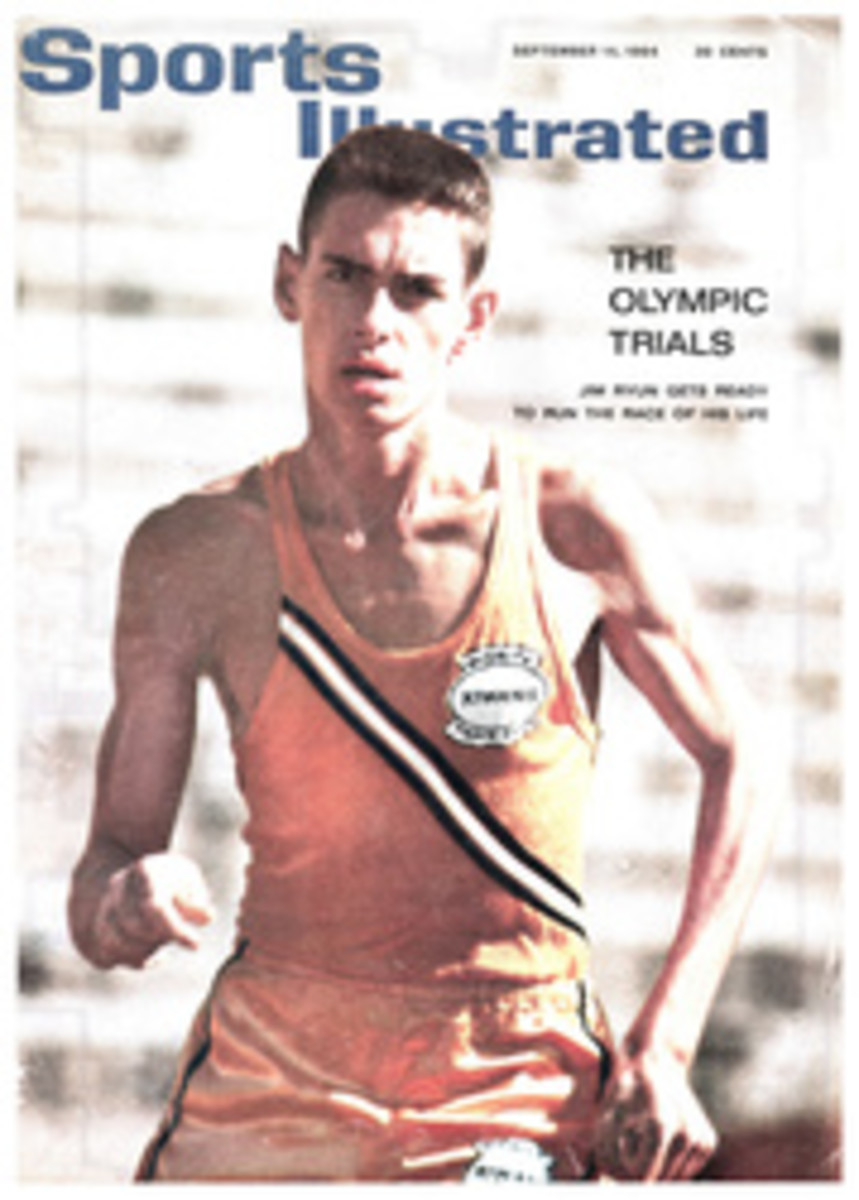
Bad-weather coats for sports fans are adapted from practical nautical apparel
Just as improvements in passenger cars have developed from features first incorporated and tested in foreign racing cars, so have some of the new bad-weather fashions been influenced by such practical apparel as a rain jacket worn by fishermen, a slicker worn by sailors and coveralls worn by Grand Prix drivers. The trend was kicked off last season by young women interested in keeping warm and dry at sports events and on other outdoor occasions. They discovered the roomy, hooded rubber-treated parkas that fishermen don on stormy days, and a national spectator fad was born. Thousands of the raglan-sleeved, knee-length parkas were sold in women's sizes of small, extra small and extra extra small. As popular as ever, the plain-looking zip-fronted coat—available only in olive drab—is a staple item at surplus stores and sporting goods shops throughout the country. The coat costs $5.
For male spectators who wish to stay dry while attending football games on rainy autumn days, Mr. Witt, Inc. of New York has designed a stylish model of the knee-length coat worn by fishermen. The coat, shown above, is made of water-repellent, vinyl-coated nylon twill and has a drawstring hood and a snap-fastened storm flap-front. Stan Witt, a partner in the firm and its designer, wears one himself while cruising in his powerboat on weekends. As a sailor, he believes a proper slicker should have many pockets and be long enough to keep the knees from getting wet. The Sportsman's Slicker, as the coat is called, comes in seven glossy colors—yellow, red, skipper blue, black, white, platinum and whaler green—the coat is designed for men, but the small size can accommodate most girls. The slicker is available at Abraham & Straus in Brooklyn, Dayton Co. in Minneapolis and Bullock's Wilshire in Los Angeles. It costs $20.
For warmth under the slicker, a useful garment is an oiled-wool sweater—its natural oil gives the sweater its watershedding qualities. The Fulton Supply Co. of 23 Fulton Street, New York City, carries these. The sweaters are bulky knit, have a loose turtleneck and are available in one color—a blue-gray mixture. They cost $16.
Another garment for female spectators at blustery outdoor events is the shiny black vinyl slicker shown above. It is wind-proof, water-repellent and styled with roomy raglan sleeves and a snap-button front. Warmth is furnished by its soft, wool lining of emerald green. Like the coveralls of the racing driver, the neckline features a throat-latch collar that can be buttoned up tight to protect the wearer's neck against blasts of wind. Each of the two large patch pockets has a smaller pocket to cache cigarettes and other small items. Made by March & Mendl, Inc. the slicker also comes in shiny white vinyl with a black-wool lining. The slickers are available at all Saks Fifth Avenue stores at $50 in the Last and slightly more in the West. The snug-fitting helmet of black ciré—a plastic-coated nylon—is made by Adolfo Réalités and costs $9 at Saks Fifth Avenue in New York City.
The problem of cold hands has been solved by the Gokey Co. of St. Paul, Minn., which has developed a new type of thermal glove. The gloves are made of deerskin lined with the underwear fabric devised by the U.S. Navy for Arctic personnel. The lining will keep hand heat from dissipating, even in sub-zero grandstands. A pair costs $3.
ILLUSTRATION
DORA
ILLUSTRATION

